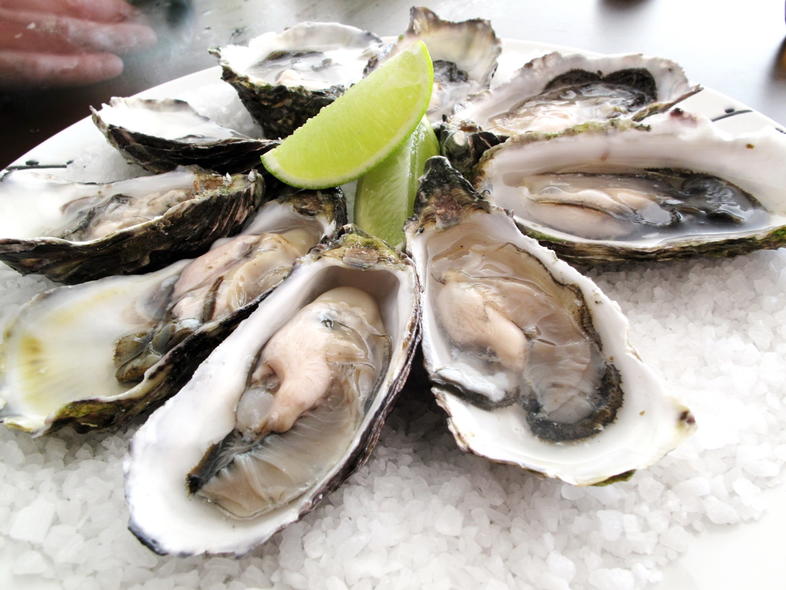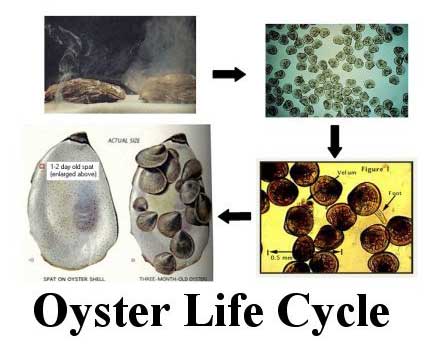

Cleaned, disarticulated oyster shells, collected from local restaurants, are strung in pairs onto a PVC T-bar (pictured to the left). influence on methods of cultivation and spat.
#Oyster spat recruitment methods pdf
An ongoing effort at FOS is monthly monitoring of spat recruitment at sites throughout the Indian River Lagoon and St. PDF Oyster recruitment was monitored in Karantina Island near Izmir, Turkey, from May to October 1999. The overall implication for choosing sites for oyster reef restoration projects, particularly in recruitment-limited areas, is that they may need to be located much closer to spawning adults than previously thought to maximize the likelihood of adequate natural recruitment and reef development. Recruitment, growth, and survival of oysters is measured to evaluate the success of oyster restoration projects and to better understand oyster health within the estuary. Additional research is needed in other areas to test the generality of the findings and to assess potential causal factors for the observed patterns. These data do not negate the potential importance of widespread dispersal and recruitment, but they do indicate a surprising level of recruitment very near their likely source. Spat densities on the reefs and within 400 m of the reefs were nearly 10-fold higher than densities more distant. To explore this relationship, spat collectors were deployed on and near (up to 1 km distance) three natural oyster reefs in New Hampshire in 20.
#Oyster spat recruitment methods full
It is well established that larvae can be widely dispersed, but the relationship between dispersal potential and actual recruitment patterns across the full range of spatial scales involved remains unknown. The shellfish industry will profit from the discovery of spatfields to develop new nursery practices that are eco-friendly and limit risks of transfers with other spatfall areas.The spatial relationship between adult eastern oyster Crassostrea virginica populations and recruitment to the benthos of their offspring is not well understood. 1996a) with recorded recruitment rates as high as 204,700 m2 per month (Thoresen et al. This study provides new knowledge on the reproduction of the Pacific oyster in a Mediterranean lagoon under warming and oligotrophication. There is intense oyster recruitment during this period and spat densities can reach an average of around 7,000 m2 (O’Beirn et al. gigas larvae, leading to poor recruitment.

Under heterotrophic conditions, high abundances of mixotrophic and heterotrophic organisms (ciliates and dinoflagellates) limited the metamorphosis of C. In these favorable conditions, we hypothesize that the ecosystem functions as an autotrophic system, in contrast to the heterotrophic system that characterizes unfavorable conditions. Growth (shell area) of intertidal oysters exposed >25 was reduced relative to more immersed oysters. In contrast, low intertidal and subtidal populations persisted through the month long experiments where adult oysters were rare. We identified a favorable environmental window for recruitment characterized by high water temperature (>26.5☌) and high nanophytoplankton and Chaetoceros spp. Only in autumn did recruitment occur in the intertidal area occupied by natural oyster populations. oyster and seagrass beds ( Kishi and Oshima. Contrary to the ‘no Pacific oyster reproduction’ paradigm in Mediterranean lagoons, our study showed that recruitment of this introduced species is possible in the Thau lagoon at levels comparable to those in other traditional French breeding basins. experiments revealed that spat recruitment was significantly higher in areas. Oyster spat and environmental parameters were monitored at several sampling sites for 3 yr (2012 to 2014) using an original method with a temporal overlap deployment of collectors to study pre- and post-settlement processes and to identify the best conditions for recruitment. This is the case in Mediterranean lagoons, in particular the shellfish-farmed Thau lagoon in France, where we studied recruitment of the Pacific oyster Crassostrea gigas. Collection of Spat recruitment methods slideshows. In the context of increasing demand for environmental recovery, aquatic systems may face the challenge of evolving under oligotrophication. View Spat recruitment methods PowerPoint PPT Presentations on SlideServe.


 0 kommentar(er)
0 kommentar(er)
